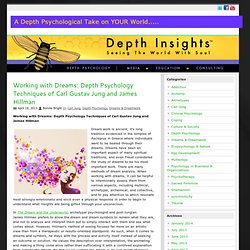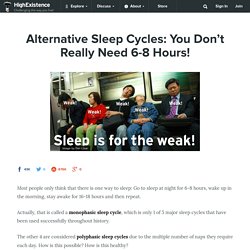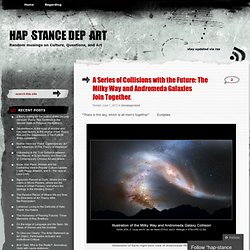

Dreamcatcher ( Life is a dream. ) SleepTiming: Sleep Calculator. Hypnagogia and Hypnopompia. Hypnagogia is the imagery, sounds and strange bodily feelings that are felt at “sleep onset.”

This is a simplification though, as researchers have noted hypnagogic imagery in the lab at periods of quiet wakefulness as well as stage 1 sleep. Others have correlated hypnagogia with pre-sleep alpha waves and also REM intrusion into sleep onset. The truth is that the wake-sleep transition is still not understood. And neither are its trippy visuals. whispy lights, multi-dimentional geometric objects, or a sudden image like a stranger’s face Few people remember hypnagogic imagery. Strange noises, voices and rushing sounds are typical, as well as weird mechanistic sounds like beeps and boops. Some hear music — I personally have had lucid hypnagogic orchestras from time to time, with the ability to listen passively or focus on a particular instrument to induce a solo.
Entoptica - by Ryan Hurd, 2005, acrylic: inspired by my hypnagogic imagery Some people are haunted by the hypnagogic imagery. Working with Dreams: Techniques of CG Jung & James Hillman. Working with Dreams: Depth Psychology Techniques of Carl Gustav Jung and James Hillman Dream work is ancient, it’s long tradition evidenced in the temples of Asclepius in Greece where individuals went to be healed through their dreams.

Dreams have been an important aspect of many spiritual traditions, and even Freud considered the study of dreams to be his most important work. There are many methods of dream analysis. When working with dreams, it can be helpful to intentionally assess them from various aspects, including mythical, archetypal, alchemical, and collective, and to pay attention to which resonate most strongly emotionally and elicit even a physical response in order to begin to understand what insights are being gifted through your unconscious. I find Hillman’s technique enjoyable and rewarding as an activity, like reading a good book or watching a movie with a plot and characters that take place in front of your eyes.
Jung asserts, “A dream…is a product of the total psyche. Alternative Sleep Cycles: You Don’t Really Need 6-8 Hours! Most people only think that there is one way to sleep: Go to sleep at night for 6-8 hours, wake up in the morning, stay awake for 16-18 hours and then repeat.

Actually, that is called a monophasic sleep cycle, which is only 1 of 5 major sleep cycles that have been used successfully throughout history. The other 4 are considered polyphasic sleep cycles due to the multiple number of naps they require each day. How is this possible? How is this healthy? Well the most important of every sleep cycle is the Stage 4 REM (Rapid Eye Movement) sleep, which has been shown to provide the benefits of sleep to the brain above all other stages of sleep. This way, you still get the benefits of 8 hours of sleep without wasting all of the time it takes to get to REM cycles, resulting in a much more efficient sleep cycle.
Uberman Cycle: 20 to 30 minute naps every 4 hours, resulting in 6 naps each day. Dawn simulator curbs wintertime blues. A Series of Collisions with the Future: The Milky Way and Andromeda Galaxies Join Together. « hap·stance dep·art. Posted: June 1, 2012 in Uncategorized “There is the sky, which is all men’s together.”

Euripides Illustration of Earth night-time view of Andromeda-Milky Way Galaxies Four Billion years from now our once lone galaxy will have a major collision with the oncoming Andromeda Galaxy. The collision will result in a merger of the two galaxies remaking the two into a larger galactic body. As NASA notes: “Computer simulations derived from Hubble’s data show that it will take an additional two billion years after the encounter for the interacting galaxies to completely merge under the tug of gravity and reshape into a single elliptical galaxy similar to the kind commonly seen in the local universe.
The insight to the collision “came through painstaking NASA Hubble Space Telescope measurements of the motion of Andromeda, which also is known as M31. See the Hubble/NASA site. Like this: Like Loading... The Science of Dreaming. Want to get ahead? Sleep in. Smug early birds take note: Night owls actually have more mental stamina than those who awaken at the crack of dawn, according to new research.

"It's the late risers who have the advantage, and can outperform the early birds," said Philippe Peigneux, a professor of clinical neuropsychology at the Free University of Brussels in Belgium, who along with co-author Christina Schmidt published the counterintuitive findings in the latest issue of the journal Science . Using magnetic resonance imaging, the pair conducted an experiment that measured alertness and ability to concentrate in 30 subjects who were naturally "extreme" early or late risers. The early risers got up between 5 a.m. and 6 a.m., and the late risers at noon. Maintaining their natural schedules, the volunteers spent two consecutive nights in sleep labs. After 10 hours of being awake, the early birds showed reduced activity in brain areas linked to attention span, compared with the night owls.